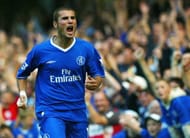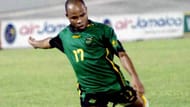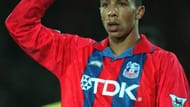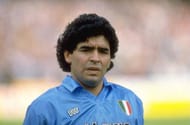5) Adrian Mutu
Romanian international striker Adrian Mutu was an extremely talented and promising young player when he signed for Chelsea in August of 2003, but he ruined his Premier League career after failing a drugs test for cocaine and was released just over a year later in October of 2004. Mutu was banned for seven months as a result and fined £20,000 by the Football Association.
He returned to football with Juventus and went on to play for the likes of Fiorentina and Cesena. Now 36, his last club was FC Petrolul Ploie?ti in his homeland, where he didn’t live up to expectations – and a move to India with FC Pune City fell through last year when FIFA refused to sanction the deal.
4) Jermaine Hue
Jermaine Hue was a Jamaican international midfielder whose career was mostly spent in two stints with Harbour View in his homeland – with brief forays into American and Swedish football with Mjallby and Kansas City Wizards in between. Now 36, Hue has recently retired, but it all nearly went very wrong for him back in September of 2013.
He was banned from football for nine months – when he was already 35 – for testing positive for a banned substance after a World Cup qualifier against Honduras. That substance was dexamethasone – a type of steroid – and the resulting ban left him out of shape.
Getting back into the game proved difficult at his age and he called time on his career in May of 2015.
3) Chris Armstrong
The case of Chris Armstrong highlights just how much football has cracked down on drug use a lot more in recent years. Armstrong was a 23-year-old Crystal Palace player when he tested positive for cannabis in March of 1995. In doing so, he became the first ever Premier League player to fail a drug test and he received a ban as a result.
However, after attending a brief rehabilitation programme, he returned to the pitch in less than a month. That very same year, following Crystal Palace’s relegation to the old First Division, he signed for Tottenham Hotspur for £4.5 million, making him the club’s record signing and the most expensive player to ever leave Crystal Palace at the time.
2) Gerard Kinsella
Gerard Kinsella is proof that lower-level football is monitored just as much as top-level and international football when it comes to drug use. The Fleetwood Town midfielder was banned from football for two years in June of 2013 after testing positive for an anabolic steroid.
The former Everton prodigy was just 21 at the time and maintains to this day that the use of the steroid wasn’t deliberate and that he had innocently received an injection to help with the pain of a chronic shoulder injury. Last year, Kinsella was allowed to resume training with a football club with a view to returning to the game when his ban comes to an end this year.
But Kinsella has yet to sign with anyone and his hopes of emulating the likes of his former Everton youth team colleage Ross Barkley look increasingly slim.
1) Diego Maradona
Without question, the most high-profile case of a footballer being banned for drugs comes in the form of Argentina legend Diego Maradona – and in his case it happened twice. Maradona was first banned from football in 1991, whilst playing for Napoli in Italy, when he tested positive for cocaine. He served a 15-month ban and left the club in disgrace to sign for for Sevilla in Spain.
Three years later, Maradona was banned from the game again – this time whilst a Newell's Old Boys player – after failing a drug test for ephedrine doping during the 1994 World Cup. He played two games in that tournament before being sent home as a result of his test proving positive.
Given that he’s one of the greatest players of all time, one has to wonder just how great his legacy would have been without such scandal.





